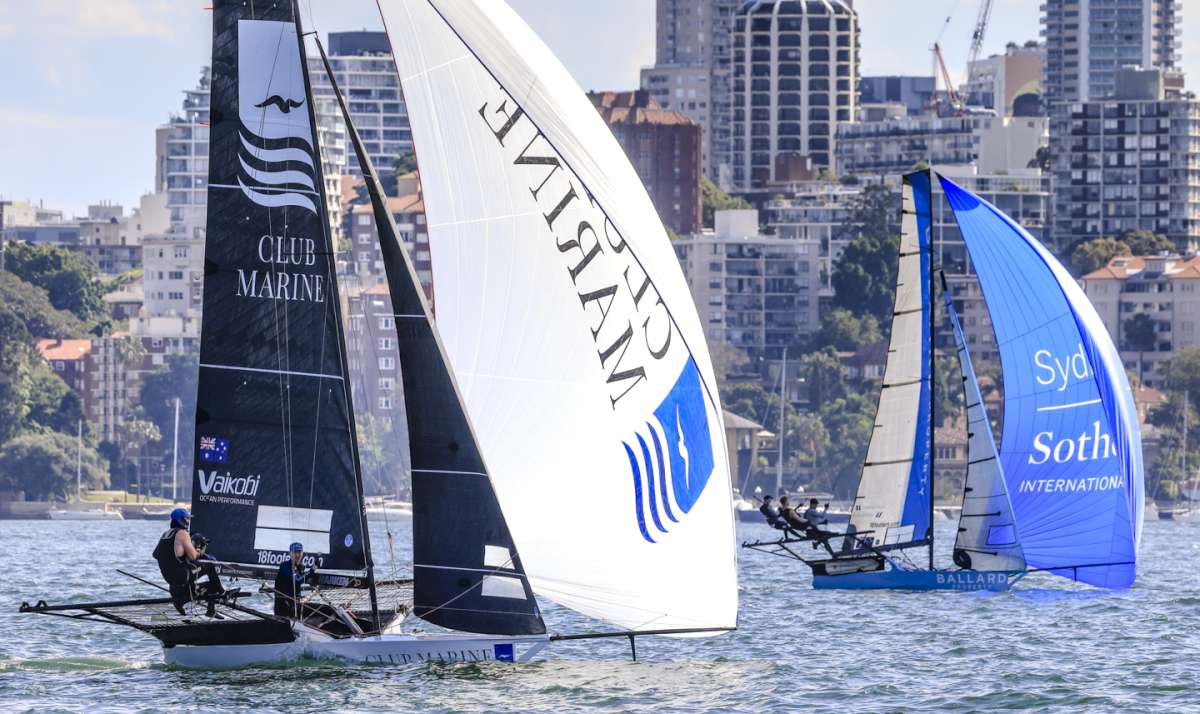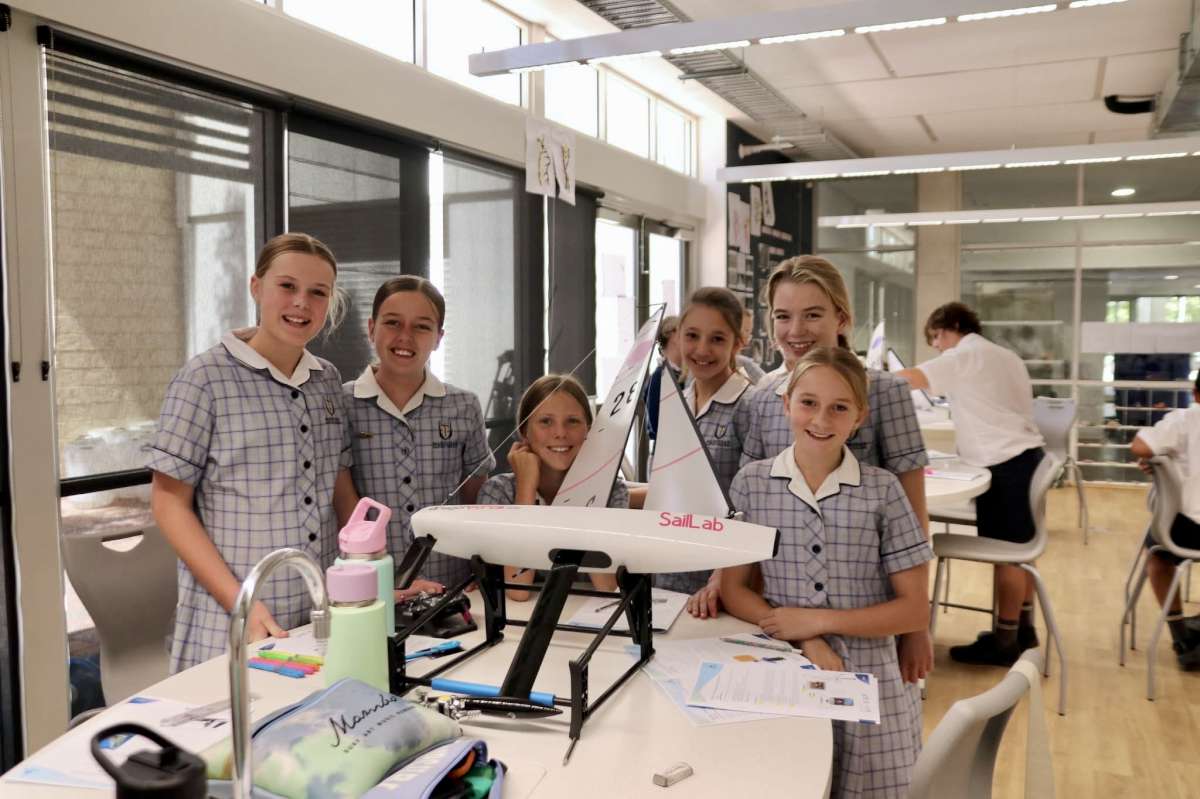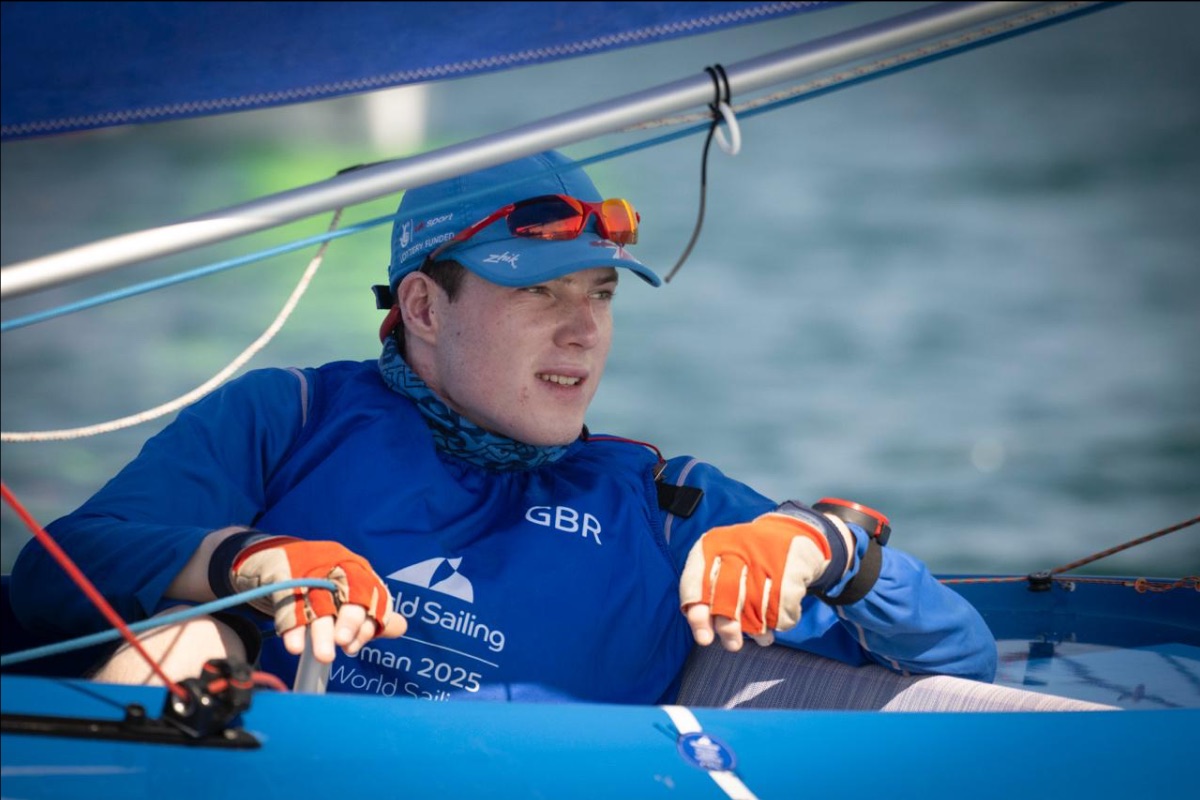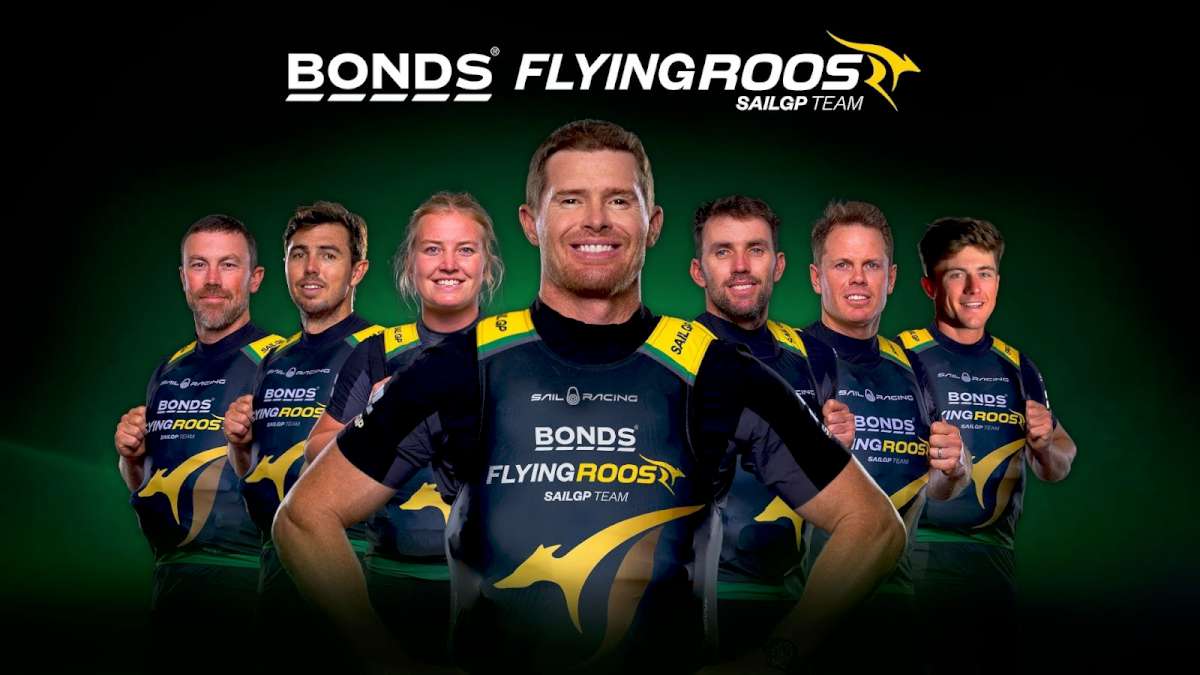Eaine Kleiss and husband Chris enjoy a slow ride to Colombia after the wind deserts K-Sera.
Sea fog drifted in, blanketing the feet of Cartagena's skyscrapers as we drifted towards the city. Only two more miles and we could drop the anchor after five days at sea, but those two miles may as well have been 100. The wind had deserted us.
Weather forecasts for the Caribbean west of Curacao frequently promised strong following winds and big seas, especially nearing Colombia. A cruiser giving weather reports on the Curacao Cruisers Net would often light-heartedly refer to “green sea monsters” off the Colombian coast.
Ready for anything
Though our forecast had been for 10-15 knots, we set off ready for anything. The long months spent in Curacao refitting K-Sera II with new electronics, safety gear, engine, shaft and propeller were over.
Thursday, Friday, we sailed steadily towards our destination, using the new engine to give us a boost at times.
But it's a sailboat, right, as we were about to be reminded. Next time we started the engine an ominous rumbling saw Chris hurriedly checking engine and gearbox – all OK. The noise was coming from further astern.
“It must be either a loose propeller, or a problem with the cutlass bearing,” said Chris, frowning. “We'll have to rely completely on the sails and just use the engine to top up the batteries.”
On we sailed, saved from boredom on night watches by frequent sightings of ships. Most we could ignore, having checked their course and destination on our AIS. One or two we called on VHF to ensure they had seen K-Sera and would change course slightly to avoid us.
By day we were entertained by flying fish, amazed by their ability to fly 100m or more above the water.
Making way
Sunday the wind dropped until we could barely make way. The sun beat down on a mirror sea; our sails sagged.We could see the coast of Colombia.
We could also see thunderstorms, surrounding us at times.Would we ever get there, I wondered.
We watched for shipping as usual that night, spotting a 26m tug on the AIS. It agreed to pass to K-Sera's port following our radio calls. Soon after, Chris, watching a large bank of cloud on the radar, was dismayed to see another AIS symbol appear there. It was a 180m freighter travelling at 19 knots – on a collision course with us! “I'd better call them,” he said. “They must not have seen us because of the storm.”
At first the ship's officer agreed they had not spotted K-Sera, but after checking said they could see her, agreeing to pass to our port.We watched the AIS, but the ship's course did not change, estimated time of collision only minutes away.
Two boats
“They must have seen the tug on radar and think it is K-Sera,” said Chris as he picked up the mike to call the ship again. Making contact he asked, “Are you aware there are two vessels nearby, our sailboat, and a tug? You are still on a collision course with us!”
By now we could see the outline of freighter looming in the darkness. This could be the end of our dream of sailing back to Australia.
At what seemed the last minute, two things happened. The ship changed course slightly, and a squally breeze enabled us to tack. The ship passed just 400m from K-Sera.
Drifting along
Monday, Monday, still drifting, until late that night we picked up a gentle breeze. How wonderful to be actually sailing. I felt like celebrating when our speed reached 3.5 knots, creeping along till we could see Cartagena stretched before us. Then the breeze disappeared.
“We have to do something,” said Chris, “Or we'll still be out here tonight! Let's see if they can hear us on the VHF Cruisers Net.” (We knew it was on at 8am.)
Ancient fortresses
Now with a population of a million, Cartagena was founded in 1533. There are ancient fortresses and immensely thick walls built to protect the gold Spain plundered from the Central and South American Indians. This was once the largest repository of gold in the world.
The largest of the forts is Castillo de san Felipe. Riddled with tunnels, it is a massive pyramidshaped structure.
Wandering into a commercial centre we discovered a multitude of businesses in what look tiny monastery cells opening off narrow passageways. Businesses that dominate are hairdressers, internet shops, photocopying, repairs for shoes, telephones, computers, a bakery, dressmakers, selling computer ink etc.
Other small traders operate on the footpaths. One street corner had several stalls selling a variety of tools.
Passing through an archway in the ancient wall, we walked the narrow streets of the Old City with its colourful buildings and overhanging balconies. Street vendors were busy with their customers while police kept things in order. Obviously tourists, we were targeted by a “guide”, who conducted us to an emerald shop, where we learned how to recognise a good emerald. Then Chris explained how the Australian dollar had nose-dived, providing us with a graceful exit. Colombia produces most of the world's emeralds.
Parque Bolivar
Nearby Parque Bolivar, a small botanic garden with four fountains, is popular with locals. The shoe-shine man was busy there, and two men played chess over a cup of tinto. Up the street an artist demonstrated his skills to a cluster of tourists. Other artists displayed their works along the footpath. Secondhand books and cheap jewellery were on sale within the “This K-Sera. We are becalmed outside the harbour. Can anyone with a large dinghy and outboard assist us to get in?”
“This is Akka. We have 15 horses on our three-metre dinghy. We can be out as soon as we get fuel.”
While we waited we launched our dinghy and put on the 15hp outboard. Chris lashed it alongside and managed to get us moving slowly.
With the arrival of Akka's dinghy we raced along at four knots. Not only were we rescued, but we had guides into the anchorage. What a great welcome. The imposing statue, Virgen del Navigante (Madonna – Virgin of Sailors), standing midharbour left us in no doubt we were entering a Catholic country.
Checking in
Next day we went ashore to check in. At Club Nautica, cruisers' “home away from home”, the agent, David, took our passports and ship's papers to deal with formalities. This would cost $75US. We signed on at the club, which charges about $25AU a week for the use of the dinghy dock, showers, book exchange and water.
Drinks, meals and laundry may be entered on your tab, paid each Wednesday. There's wifi too, and a comprehensive booklet detailing where to get just about anything.
Club Nautica is a small, dilapidated marina with a pleasant bar and tables overlooking the water. We stepped from the dinghy dock into a thatched building decorated with flags, including Australia's In the street behind, small yellow taxis, motor bike taxis, and bicycle-powered rickshaws are all ready to go, but we walked the block to the well stocked modern supermarket and internet café, sending home news of our arrival. Several security guards looked quite relaxed at the supermarket entry.
On the way back we bought an icecream from a street vendor ringing a bell on his small cart to alert customers. Other vendors sell fruit and vegetables, bread, or hot snacks, calling out their wares as they walk. Many carts had tyres tied to the rim with string. Others had taken the tyres off and tied on strips from old car tyres. Most had wobbly wheels, the axles worn down through perhaps a generation of use.
Colourful sights
Men walk the streets with a few vacuum flasks of strong, sweet black coffee (tinto) that they sell in tiny paper cups. A single sweet or cigarette can be bought from them too.
Women sell fruit from large bowls carried on their heads. Men shouldering bucket and brooms trudge past in search of the next job, and others collect recyclable rubbish in their barrows. Everyone has a friendly smile and greeting.
We felt safe exploring the streets of the Manga Island residential area near the marina, and walking along the water's edge to the Old City.
Old buses with amazing paint jobs ferry their passengers round the city. Cars, motorcycles and arches of the city wall. Vendors chased us with souvenir T-shirts: “The price is going down!”
An old man wound the handle of his small mobile ice-crusher to sell flavoured ices (it desperate needed some new bearings).
In a large souvenir shop were the usual T-shirts, hats, and craft items and copies of ancient artefacts including male genitals that appeared to be musical instruments, and models of copulating couples in various positions.
Children fed the pigeons outside the church of San Pedro Claver, an 18th-century priest who worked with the slaves for 40 years, an early human-rights campaigner. In the same square, metal sculptures depict domino players, a chess game, someone chopping fruit and a woman with her sewing machine.
Many old buildings were being renovated or restored, financed by European investors.
Contrasts
By contrast, next morning we walked to a new shopping complex with a huge hardware and homewares store like Bunnings, as well as upmarket clothing stores and other US-style outlets. But there were few customers – apparently it is busier in the evening. Using our English-Spanish dictionary, guesswork, lots of smiles, and sign language, we managed to do our shopping.
On the way back to Club Nautico we hired a bicycle-powered rickshaw – hard work for the rider towing the two of us, but no pollution and minimal inputs.
Meanwhile, our broken pole end had been taken to a welder, who fixed it for a reasonable price. Here if something breaks you fix it, just as it used to be in Australia.
Have your sails washed or your boat polished, joinery or varnishing done by the locals for very competitive prices. Labour is cheap in Colombia and even with a falling Australian dollar, a visiting yachtie can live cheaply. Local currency is the Colombian peso with 2000 roughly equal to one US dollar. We were getting about 1500 pesos for each Aussie dollar at time of writing.
PS. I almost forgot, the propeller wasn't falling off, and the cutlass bearing is fine. The Colombian diver checked it all out. Alberto found and removed a serious growth of barnacles on the new prop, just a month since it first touched the water! They grow fast in these tropical waters.























